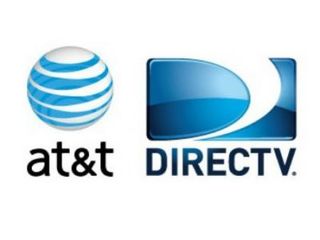No Easy Path to AT&T-DirecTV Combination

WASHINGTON — Wall Street analysts expect the government to ultimately bless the meld of AT&T and DirecTV, but not without some major conditions — more than the companies have offered so far — and not until after a long look by regulators.
Telco AT&T announced May 18 it was proposing a $67.1 billion debt-and-equity offer for satellite-TV provider DirecTV, the No. 2 U.S. pay TV provider with 20.2 million customers.
AT&T, whose U-verse TV fiber platform is the No. 6 multichannel-video provider with about 5.3 million subscribers, pledged to expand high-speed broadband to 15 million customers, mostly in rural areas, plus offer standalone broadband; establish nationwide pricing for DirecTV service; and abide by the Federal Communications Commission’s 2010 network-neutrality rules, whether or not they are restored. The combined AT&T-DirecTV would join Comcast and, if their deal goes through, Time Warner Cable in that commitment.
AT&T also said it would make a big-bucks bid in the broadcast incentive-forward auction — at least $9 billion and perhaps much more.
The announcement shifted a little of the focus from Comcast’s proposed merger with Time Warner Cable. That distraction was likely just fine with the first- and third-largest multichannel video providers, as anticonsolidation activists are now taking shots at a new target.
Craig Moffett, principal amd senior analyst at MoffettNathanson, has advised investors in blog posts that he thinks the AT&T-DirecTV deal will still pass muster with regulators, only with a little more “perspiration” than originally thought.
There is the size of the combined company and its potential buying power, the same concerns that Comcast- Time Warner Cable raises among the anti-consolidation community.
Multichannel Newsletter
The smarter way to stay on top of the multichannel video marketplace. Sign up below.
But there is also the issue of reduced horizontal competition, according to Moffett.
According to MoffettNathanson’s analysis, the deal would reduce pay TV competition in 25% of the markets where there is currently a choice among DirecTV, Dish Network, AT&T’s U-verse TV platform and a cable operato If U-Verse continues to be offered, as AT&T has said it will, there would still be four choices, even though two would be from the same company.
Using the Herfindahl-Hirschman Index that the Justice Department often employs to determine market concentration, the DOJ might view the deal as creating some highly concentrated markets such as Dallas, Houston and Miami, where both DirecTV and U-verse are major players.
“This analysis strongly suggests the agencies will presume that the deal is likely to enhance market power in the traditional pay TV market, a presumption AT&T and DirecTV would have to rebut,” MoffettNathanson said.
The HHI is far from the only measure, but defining the market is a key factor, and Justice might include Netflix or other over-the-top offerings, or look at the majority of markets that already only have three or fewer players to judge their competitiveness.
Then there are the voluntary conditions the companies have already offered, like national pricing and expansion of rural broadband.
MoffettNathanson said it is “still of the view that the deal will get done. Regulators are not mechanically bound by HHI analyses, and this feels like a deal where the competitive impact will be relatively muted in spite of what the math suggests.”
Bernstein Research said it also expects government approval, but suggests that won’t come for a full year — until the second quarter of 2015 — and will have numerous conditions.
The research firm sees the overlap between DirecTV and U-verse as the key competition issue, and sees the FCC and DOJ requiring footprint-wide pricing to discourage price increases where the two overlap.
Bernstein also predicts a requirement that both companies offer standalone broadband, probably more than the 6 Megabits per second standalone service that AT&T has offered. They will likely have to make network neutrality commitments for both wired and wireless broadband networks, and expand deployment and adoption beyond what the companies have already promised.
What’s an HHI?
WASHINGTON — The HHI, or Herfindahl–Hirschman Index, is a measure of market concentration the government uses when vett ing mergers. It is calculated by adding the squares of the market shares of the competitors in a market. So, if only one company had 100%, the HHI would be 10,000. If there were 10 companies with 10% each, it would be 1,000.
The lower the HHI, the less concentrated the market. The HHI increases as the number of competing firms decreases and as the disparity in share of the market increases.
Generally speaking, an HHI of 1,500 to 2,500 is considered to be a moderately concentrated market, and above 2,500 a highly concentrated market. Transactions that boost the HHU by more than 200 points in already highly concentrated markets are presumed to “likely” enhance market power.
Contributing editor John Eggerton has been an editor and/or writer on media regulation, legislation and policy for over four decades, including covering the FCC, FTC, Congress, the major media trade associations, and the federal courts. In addition to Multichannel News and Broadcasting + Cable, his work has appeared in Radio World, TV Technology, TV Fax, This Week in Consumer Electronics, Variety and the Encyclopedia Britannica.










